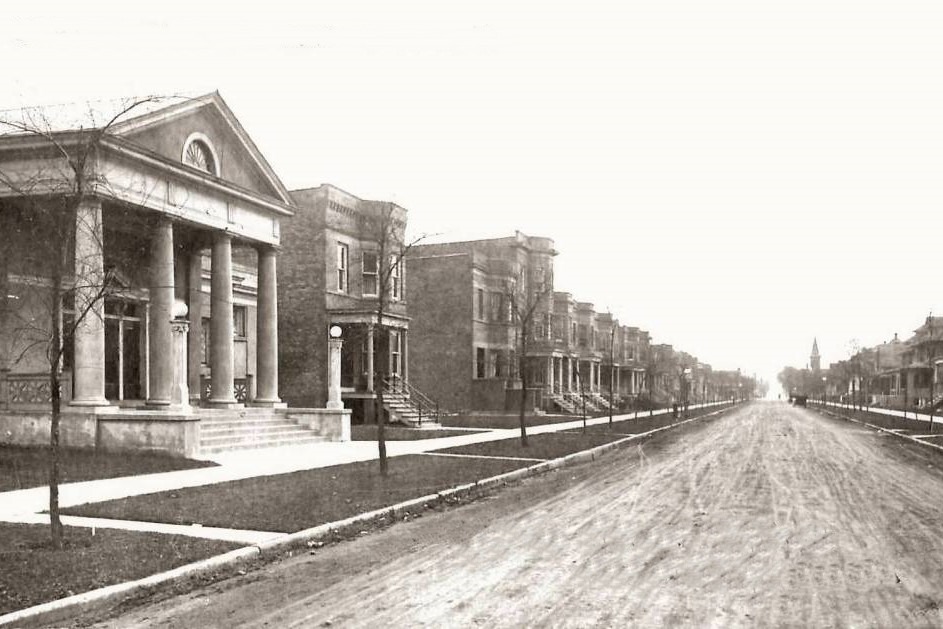
Among the 77 neighborhoods in Chicago, is Roseland, located on the city’s far south side. It covers different neighborhoods, including Fernwood, Princeton Park, Lilydale, the southern part of West Chesterfield, Rosemoor, Sheldon Heights, and West Roseland.
In the 1840s, Dutch settlers established the town of Roseland, referring to it as “de Hooge Prairie” due to its elevated and more arid terrain in comparison to the Dutch settlement that had been created further south near the Little Calumet River, which was known as “de Laage Prairie”, now recognized as South Holland, IL.
Until the late 19th century, Roseland and Lake Calumet were an entirely agricultural community. George M. Pullman then designed and constructed the town of Pullman, Chicago, which was a model industrial city with modern brick homes that featured electricity, plumbing, and gas utilities. This drew in skilled tradespeople from all over Europe, with many choosing to set down roots in nearby Roseland. In the 1900s, the Pullman Freight Car Works was established on 103rd Street, and it still stands today, now serving as a flat-rolled steel distribution center.
In 1892, Roseland was annexed to the city of Chicago, transforming it into a cosmopolitan locale of many different cultural, racial, and ethnic backgrounds. The area east of Roseland, known as Kensington, was populated by a large number of Italian Americans. While some of these Italians had roots in the Little Italy district on Taylor Street, many more who had settled in the neighborhood were from the northern Italian regions of Piedmont, Tuscany, and the Veneto.
Italian immigrants who came from all over Italy turned the Kensington and Roseland communities into hubs for Italian life on the South Side. The development of Sant’ Antonio di Padua Church and its accompanying grammar school was an important part of the area’s religious and cultural growth. Businesses quickly grew up and the formerly rural area was transformed into a residential and commercial area, with multiple industries surrounding it. Stores located on Michigan Avenue served the whole of the South Side of Chicago.
In the 1960s, the industrial environment led to a downturn in the economy, resulting in the closure of several steel mills to the east. Pullman reduced its production and eventually shut down in 1981 and the Sherwin-Williams paint factory closed its doors in 1995. This was followed by a period of rapid ethnic transformation.

Fernwood
Located at the western border of Roseland, Fernwood spanned from 99th Street to 103rd Street. It was generally regarded as an affluent area of Roseland, stretching even into the Washington Heights community up until Halsted Street. Referred to by some as West Roseland, it was established in 1883. A garden-like parkway running from 95th to 103rd Streets along Eggelston was recognized as Fernwood Parkway and was a notable feature of the area.
Princeton Park
The Princeton Park subdivision was established in 1944, situated in the northwest corner of Chicago’s Roseland district. Initially, it was a collection of low-cost multi-family row houses between 91st and 95th streets and Wentworth and Harvard streets, with the eastern boundary later being extended to State Street (now the Dan Ryan Expressway). The area comprises single-family homes, including traditional bungalows that were once part of Lilydale.
Donald O’Toole, a banker/real estate developer, was the mastermind behind the project. This land had been tilled by the Dutch colonizers in the Roseland vicinity before that. In the beginning of the 20th century, Roseland saw a drastic transformation from a farming settlement to a residential area. As one of the few unoccupied areas in the area, it was ready for development.

Lilydale
In the 1920s and 1930s, Lilydale was regarded as a sparsely populated “cabbage patch” located in the northwest part of Roseland between 91st and 95th Streets and the Chicago & Eastern Illinois Railroad tracks (then, the Chicago and Western Indiana Railroad). The 1940s saw an influx of workers from the South to the industrialized North in pursuit of a better life and job opportunities, which marked the peak of the Second Migration.

